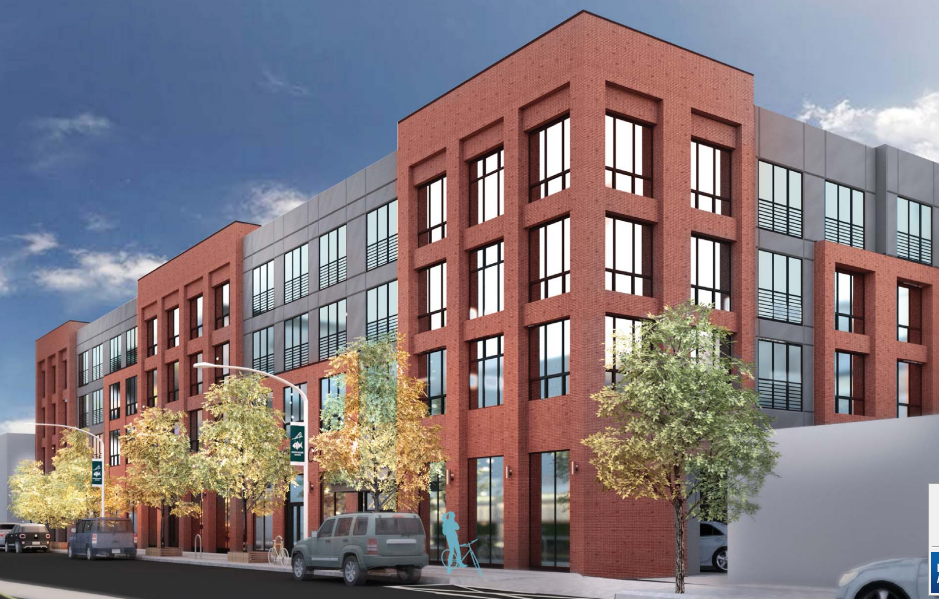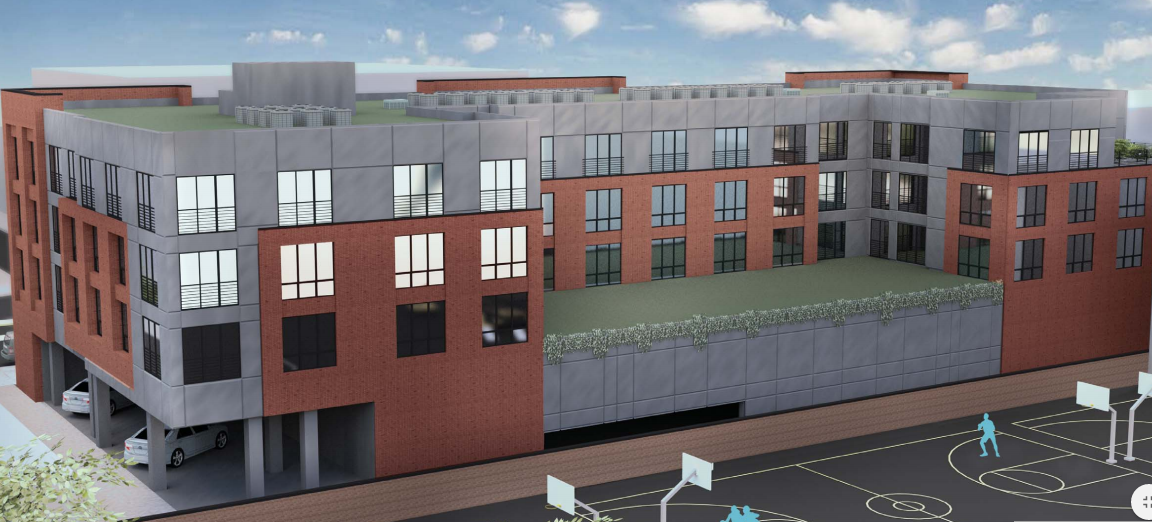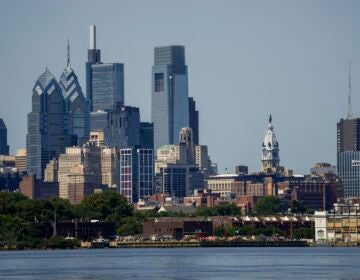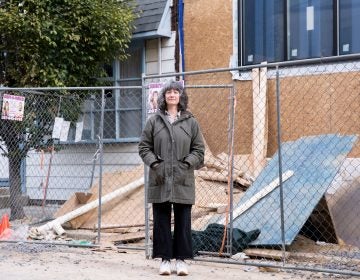Short Civic Design Review meeting hints at cooling large development market
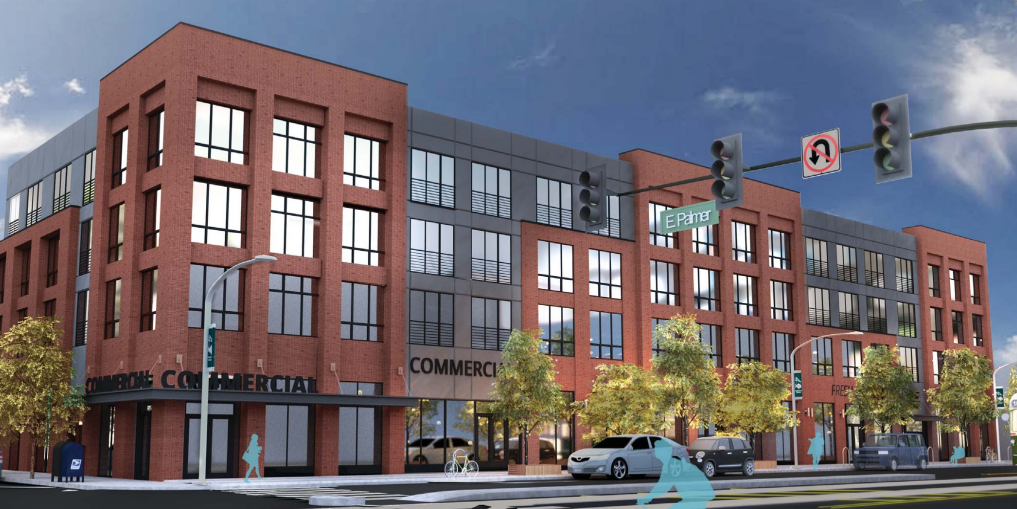
July’s Civic Design Review (CDR) meeting proved one of the shortest in the history of the five-year-old process. With only one item on the agenda, an inoffensive mid-rise apartment building in Fishtown, the meeting ended only 30 minutes after it began.
The building in question, Wolff Court, would put a 71-unit housing complex in place of one of the auto-centric uses that dot Fishtown’s booming commercial corridors. The project includes 47 underground car parking spaces, four parking spaces on the ground level, and 24 bicycle parking spaces. A 6,000-square foot grocery store and two other commercial uses will front onto Girard Avenue, while the rear of the proposed building abuts the Fishtown Recreation Center.
The Wolff Court complex is being built by-right. The CDR committee members, the Philadelphia City Planning Commission, and the Fishtown Neighbors Association were not particularly critical of its design.
The few suggestions put forward included more amenity space for tenants and making the rear elevation bordering the rec center more visually appealing, as it is currently marred by dull blank walls. It was also recommended that the developer scrap the cornice, as the building would be handsomer without it.
The Fishtown Neighbors Association shared a few concerns about the drive aisle and a low-slung wall behind the building, which they fear kids would scale or throw play equipment over. But mostly they were supportive, complementing both the added density on Girard Avenue and the redbrick building materials.
The committee members voted to conclude the CDR process for the project.
The rapidity of the meeting is notable because CDR can be seen as a proxy for major development in the city and a leading indicator of the market. The process is triggered by proposed projects that add 100,000 newly built square feet or over 100 residences, and by smaller developments in residential areas. CDR is a creature of the Nutter administration’s zoning reform and in 2010, when policy makers were debating adding the process to the new code, it was thought that “in a good economy” no more than three projects a month would hit those triggers.
But last year, it’s busiest to date, the CDR committee’s agenda stretched beyond three projects at seven of its 12 meetings. A total of 45 projects were reviewed.
Thus far, 2017 is much more sedate. Wolff Court is the 16th case that CDR considered in 2017. By comparison, 22 projects had come before the committee last year. More pertinently, only one 2017 session—in January—saw more than three items on the agenda.
As the placid July CDR meeting wrapped up, PlanPhilly asked developer and committee member Leo Addimando if the slower pace means the market is cooling down.
“I think the market is taking a bit of a pause,” said Addimando, who is also the Building Industry Association’s treasurer. “The latter half of 2017 and all of 2018 will, I think, be the peak delivery of multi-family in Philadelphia for this cycle. I think people have rightfully taken note of that and pulled back.”
He noted that construction costs have been rising in the city as well, largely because there’s been so much building recently that Philadelphia’s contractors have been overwhelmed with work.
David Feldman of the Development Workshop, another industry group, also attended July’s CDR meeting. He says that the number of residential units coming online, especially in Center City, could be a sign that the cycle is peaking. A recent Center City District report, he noted, shows that property owners were offering a month or two of free rent to entice customers—a sure sign of saturation.
“It’s clearly not as hot a climate as it was,” said Feldman. “There isn’t the unmet amount of pent up demand and unbuilt product that there was five years ago. We are still growing, hopefully, so we could still see a steady flow of demand. But if anything happens to slow development down or make it more difficult there will be more of a risk of projects taking a wait and see approach.”
If that’s the case, the committee, and the city as a whole, may be returning to the lower level of development that the zoning code’s architects foresaw back in 2010.
WHYY is your source for fact-based, in-depth journalism and information. As a nonprofit organization, we rely on financial support from readers like you. Please give today.




